Nakon jednog od najtragičnijih događaja u istoriji Srbije – povlačenja srpske vojske za vreme prvog svetskog rata preko Albanije i luke Drač, oko 150.000 naših vojnika stiglo je na Krf. Iskrcali su se u Guviji, a delom i u Mesongiju.
 Iznemogla srpska vojska je lečena na ostrvu Lazaret, dok su mrtvi prebacivani na tada pusto ostrvo Vido, kod domaćeg stanovništva poznato i kao ostrvo zmija. Na Lazaret su prve došle 21. januara 1916. moravska, pirotska i čačanska vojna bolnica. Uskoro je stiglo još nekoliko hiljada na smrt iscrpljenih i bolesnih mladića-regruta. Prvih nekoliko dana umiralo je dnevno i do 300 vojnika. Preminuli vojnici su u početku bili sahranjivani u rakama na kamenitoj obali ostrva Vida, a ubrzo, jer više nije bilo moguće fizički iskopati toliki broj grobova, njihova tela su polagana u more između Vida i Krfa. Oko 5.400 umrlih vojnika spušteno je u more, bez mogućnosti da budu sahranjeni, a ukupan broj preminulih na Krfu je oko 10.000.
Iznemogla srpska vojska je lečena na ostrvu Lazaret, dok su mrtvi prebacivani na tada pusto ostrvo Vido, kod domaćeg stanovništva poznato i kao ostrvo zmija. Na Lazaret su prve došle 21. januara 1916. moravska, pirotska i čačanska vojna bolnica. Uskoro je stiglo još nekoliko hiljada na smrt iscrpljenih i bolesnih mladića-regruta. Prvih nekoliko dana umiralo je dnevno i do 300 vojnika. Preminuli vojnici su u početku bili sahranjivani u rakama na kamenitoj obali ostrva Vida, a ubrzo, jer više nije bilo moguće fizički iskopati toliki broj grobova, njihova tela su polagana u more između Vida i Krfa. Oko 5.400 umrlih vojnika spušteno je u more, bez mogućnosti da budu sahranjeni, a ukupan broj preminulih na Krfu je oko 10.000.
Pesnik Milutin Bojić ovekovečio je srpsku ratnu dramu u pesmi „Plava grobnica“.
Na Vidu se nalazi mauzolej – spomen kosturnica rađena po projektu arhitekte Nikole Krasnova, a završena je 1938. godine.
Na mermernim zidinama nalaze se 1.232 kasete sa kostima ratnika koji su bili sahranjeni na 27 krfskih grobalja, a čija su imena bila poznata. Kosti 1.532 nepoznata ratnika sahranjena su u dva spoljašnja bočna kamena bunkera. Iznad ulaza u mauzolej je velika reprodukcija Albanske spomenice s grbom Kraljevine Jugoslavije.
Za ostrvo Vido je mitropolit Dimitrije 1918. godine rekao da je to srpski Jerusalim, dokaz vitalnosti srpskog naroda, herojske borbe za slobodu i stremljenja ka budućnosti.
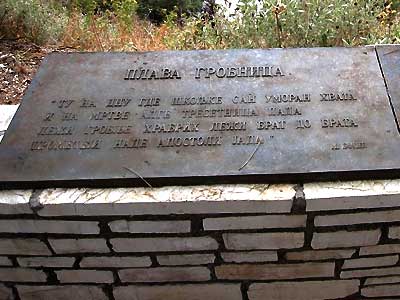 Pošto je na Krfu bilo sedište srpske vlade u progonstvu, na ostrvu su formirani gotovo svi nivoi organizacije državne uprave. Narodno pozorište na Krfu bilo je ustupljeno od strane krfskih vlasti za zasedanje srpskog Parlamenta od 19. januara 1916. do 19. novembra 1918. dok je u hotelu „Bela Venecija“ bila smeštena srpska Vlada.(Zanimljivo je da je vlasnik hotela „Bela Venecija“ u kome je bila smeštena srpska vlada, gospodin Janis Gazis, udao sve tri svoje ćerke za Srbe. Najstarija, Đovana, udala se za konjičkog oficira Milivoja Čolaka Antića. Augustaza Milana Stojadinovića, koji se, 1936. godine, kao predsednik Vlade, svojim poginulim drugovima odužio podigavši Mauzolej na Vidu. Najmlađa Safiroudala se za profesora Ljubomira Kazimirovića). Hotel Bela Venecija je u neposrednoj je blizini starog gradskog jezgra grada Krfa. Orginalno zdanje srušeno je tokom Drugog svetskog rata u nemačkom bombardovanju. Na istom mestu podignut je skoro identičan objekat istog imena. Nekoliko stotina metara od hotela Bela Venecija je Srpska kuća. Muzej u kome je ovekovečena srpska golgota tokom Prvog svetskog rata. Osim stotina fotografija, u Srpskoj kući se čuva i kopija Krfske deklaracije, kontroverznog dokumenta potpisanog 20. jula 1917. godine. Potpisali su ga, sa jedne strane Nikola Pašić, predsednik vlade Kraljevine Srbije, a sa druge Ante Trumbić ispred Jugoslovenskog odbora. Ovim dokumentom, u sred rata, Kraljevina Srbija praktično je ukinula samu sebe!
Pošto je na Krfu bilo sedište srpske vlade u progonstvu, na ostrvu su formirani gotovo svi nivoi organizacije državne uprave. Narodno pozorište na Krfu bilo je ustupljeno od strane krfskih vlasti za zasedanje srpskog Parlamenta od 19. januara 1916. do 19. novembra 1918. dok je u hotelu „Bela Venecija“ bila smeštena srpska Vlada.(Zanimljivo je da je vlasnik hotela „Bela Venecija“ u kome je bila smeštena srpska vlada, gospodin Janis Gazis, udao sve tri svoje ćerke za Srbe. Najstarija, Đovana, udala se za konjičkog oficira Milivoja Čolaka Antića. Augustaza Milana Stojadinovića, koji se, 1936. godine, kao predsednik Vlade, svojim poginulim drugovima odužio podigavši Mauzolej na Vidu. Najmlađa Safiroudala se za profesora Ljubomira Kazimirovića). Hotel Bela Venecija je u neposrednoj je blizini starog gradskog jezgra grada Krfa. Orginalno zdanje srušeno je tokom Drugog svetskog rata u nemačkom bombardovanju. Na istom mestu podignut je skoro identičan objekat istog imena. Nekoliko stotina metara od hotela Bela Venecija je Srpska kuća. Muzej u kome je ovekovečena srpska golgota tokom Prvog svetskog rata. Osim stotina fotografija, u Srpskoj kući se čuva i kopija Krfske deklaracije, kontroverznog dokumenta potpisanog 20. jula 1917. godine. Potpisali su ga, sa jedne strane Nikola Pašić, predsednik vlade Kraljevine Srbije, a sa druge Ante Trumbić ispred Jugoslovenskog odbora. Ovim dokumentom, u sred rata, Kraljevina Srbija praktično je ukinula samu sebe!
Crkve Sv. Arhanđela Gavrila, Sv. Trojice i Sv. Nikole bile su ustupljene Srbima. Na Krfu je formirana srpska osnovna škola sa 290 učenika i niža gimnazija sa 120 đaka. Izlazile su i „Srpske novine“ u tiražu od deset hiljada primeraka. Štampane su mnoge knjige kao i udžbenici za decu. Organizovana su sportska društva, održavale su se fudbalske utakmice sa savezničkim ekipama. Krf je bitan, takođe, jer je na njemu 1917. godine potpisana „Krfska dekleracija“ kojom je zaključeno stvaranje Kraljevine Jugoslavije. Sve se ovo može videti u muzeju „Srpskoj kući“ u gradu Krfu.
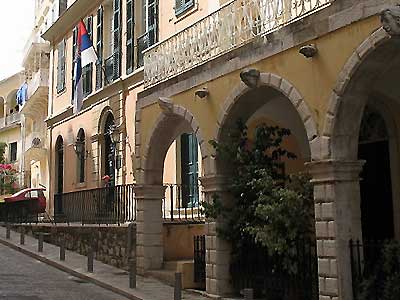 Tokom boravka na ostrvu Krfu Srbi su uspostavili jake veze sa mesnim stanovništvom. Veliki broj Srba je ostalo da živi na ostrvu, sklopljeni su mnogi brakovi. Najuverljivije svedočanstvo o neizbrisivom tragu boravka Srba na Krfu je to da su se u rečniku starijih Krfljana zadržale reči: ‘tata’, ‘baba’, ‘glava’, ‘kuća’. Na ostrvu Krfu je nastala i pesma „Tamo daleko“.
Tokom boravka na ostrvu Krfu Srbi su uspostavili jake veze sa mesnim stanovništvom. Veliki broj Srba je ostalo da živi na ostrvu, sklopljeni su mnogi brakovi. Najuverljivije svedočanstvo o neizbrisivom tragu boravka Srba na Krfu je to da su se u rečniku starijih Krfljana zadržale reči: ‘tata’, ‘baba’, ‘glava’, ‘kuća’. Na ostrvu Krfu je nastala i pesma „Tamo daleko“.
Na Krfu je postepeno, uz pomoć ljubaznih Krfljana, sunca, lekara i redovne ishrane, nastupio oporavak srpske vojske. Prvo fizički, a onda i psihički . Jedan očevidac je zapisao: „Srbi lepo urediše i ukrasiše svoje logore“. Izgledali su „zdravi, dobro naoružani, opremljeni od pete do glave“. Francuskom poslaniku Ogistu Bopu „ovako brz i potpun preobražaj ličio je na čudo“.
Kada se od Mesongija skrene ka Agios Mateosu, uskoro se sa desne strane može videti tabla koja putnike obaveštava da su došli do groblja Drinske divizije. Spomenik su podigli „Drinci svojim drugovima iz ratova…“, na kome su uklesani stihovi poručnika Vladimira Stanimirovića:
Na humkama u tuđini
neće srpsko cveće nići.
Poručite našoj deci
Nećemo im nikad stići.
Osim ovog tu je i spomenik Janisu Janulisu, koji je dao imanje za srpsko groblje. Na Krfu je zemlja vredna jer je nema dovoljno. Ali Janis je svoju njivu poklonio borcima Drinske divizije, da na njoj sahrane svoje mrtve drugove. Kada su, posle rata, kosti preminulih vojnika iskopane i prebačene u mauzolej na Vidu, Janis Janulis nije više želeo da svoju njivu obrađuje. Ostala je kao spomen njegovog velikog srca. Srbija mu se odužila time što je i njemu podigla spomenik na glavnom trgu Agios Mateosa, kod seoske crkve.
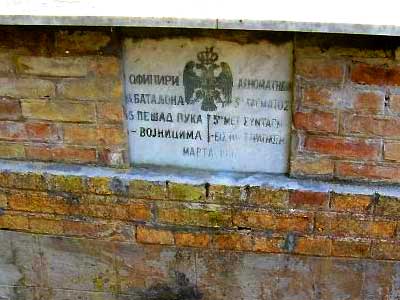 Putem od Gardiki tvrđave prema Paramonasu naići ćete na česmu koju su srpski oficiri posvetili svojim vojnicima. Svuda oko česme, po maslinjacima i proplancima, nalazili su se tokom 1916. šatori srpske vojske. Nažalost česma je presušila.
Putem od Gardiki tvrđave prema Paramonasu naići ćete na česmu koju su srpski oficiri posvetili svojim vojnicima. Svuda oko česme, po maslinjacima i proplancima, nalazili su se tokom 1916. šatori srpske vojske. Nažalost česma je presušila.
U Arhivu Srpske akademije nauka i umetnosti, čuva se sledeće pismo:
Pismo jedne Grkinje sa Krfa Srpskom oficiru na Solunskom frontu 1918. godine.
Otkako ste Vi Srbi otišli sa Krfa, ja se još nisam razveselila. To vele sve žene koje žive na ovom malom ostrvu. Za nas bi bilo bolje da niste došli na Krf, jer nam je sada gore. Za poslednje tri godine toliko sam se bila navikla na ta pitoma lica vojnika, na njihove dobroćudne pitome oči.
Čudna ste vi rasa! Jedan ruski pukovnik mi reče da je to osobina svih Slovena. Ove poslednje tri godine dok ste bili ovde, proživele smo lepo i prijatno.
Svakog dana trčala sam na prozor da vidim kakvog poznatog srpskog oficira, samo da mi se javi i da se prijatno na mene osmehne. Bilo mi je dosta za taj dan do spavanja. Krf je onemeo, ne peva se više. Vaš narod stalno peva i na to pevanje i taj žagor bila sam se toliko navikla.
Možete da me smatrate za velikog neprijatelja vašeg naroda, jer sam uvek želela da se što docnije vratite u svoju otadžbinu. Došli ste, pokazali šta je život i otišli, a nas ste ostavili nesrećne.
Šta nam vredi i lepota i sve druge lepe osobine, koje su Srbi kod nas našli, kad niko u tome ne ume da uživa. Blago onim devojkama koje su Srbi odveli odavde i spasli na ovom ljubavnom ostrvu, punom sunca i čempresa, ali bez ljubavi.
IZVOR: Arhiv SANU
Priredio: Saradnik portala Poreklo Vojislav Ananić












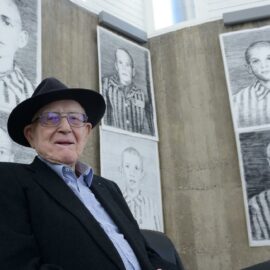
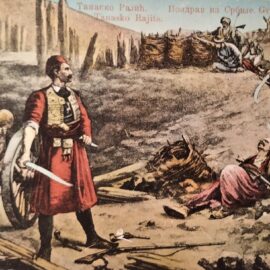
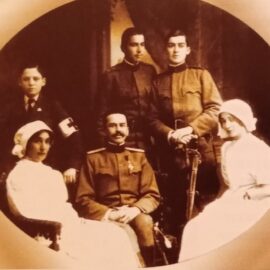
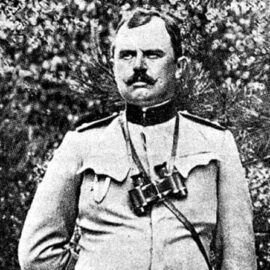
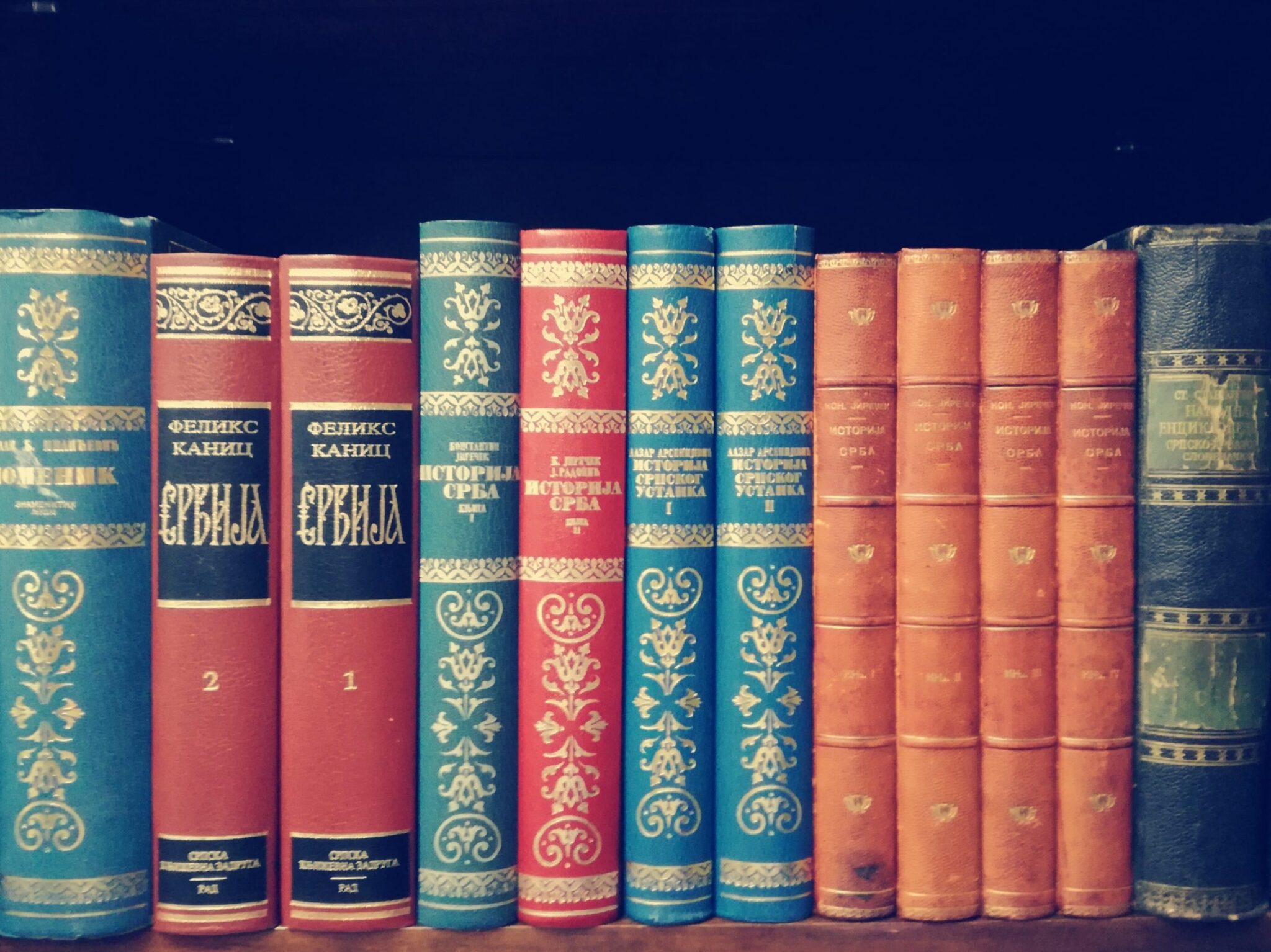
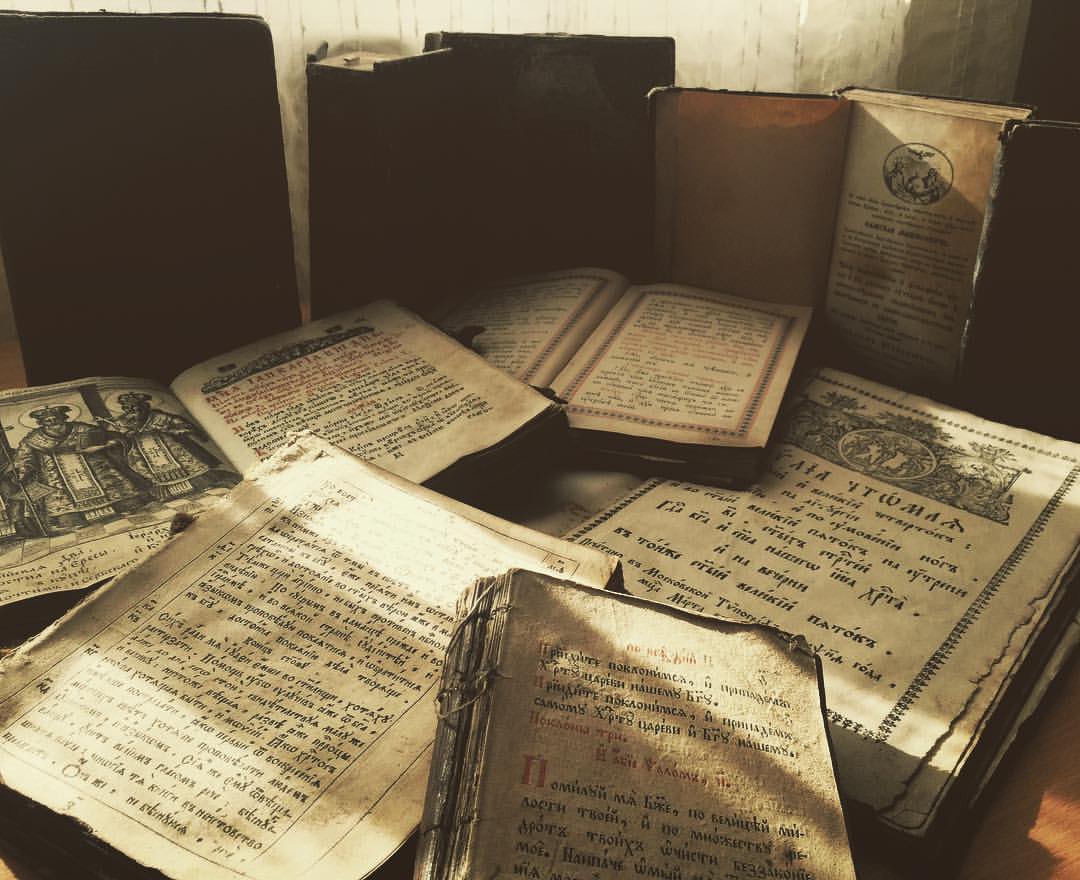


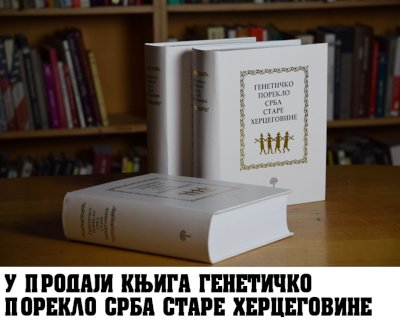
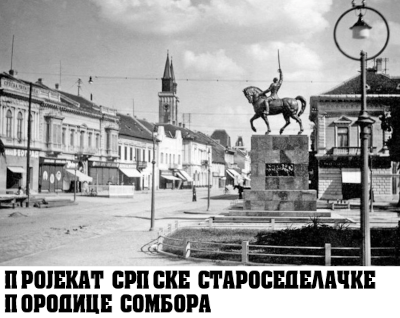
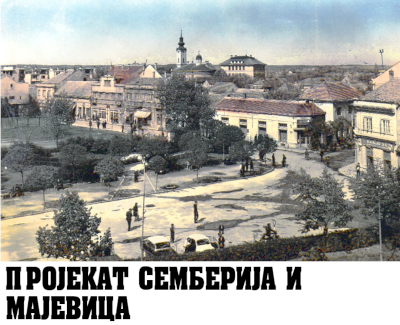
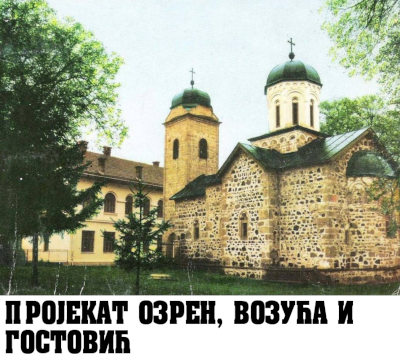
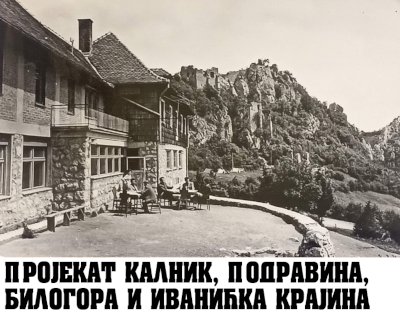
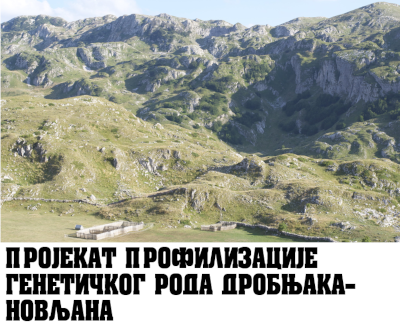
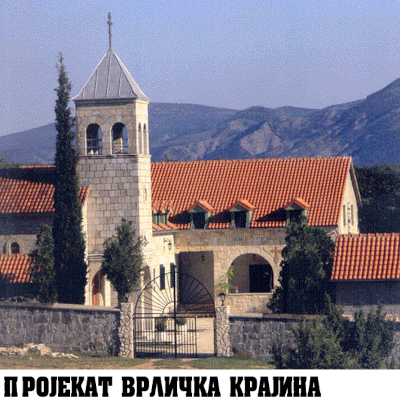

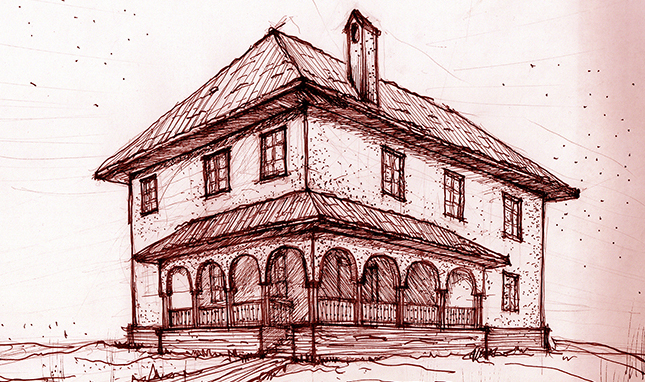

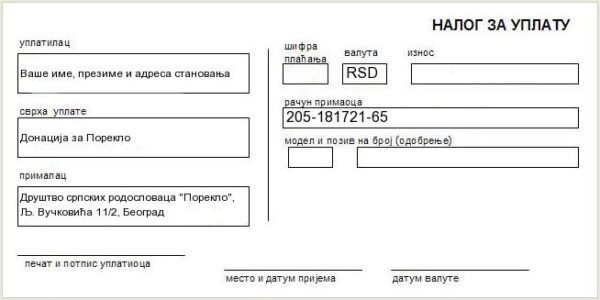
4. april 2014. u 22:16
Dragan Mihailović
Da li postoje spiskovi nasih vojnika koji su umrli na Krfu i Vidu?
5. april 2014. u 07:07
Vojislav Ananić
To ne znam zaista. Možda se javi neko ko ima te podatke.
5. april 2014. u 11:59
CONQUEST OF PARADISE
• Tamo gde PRAVEDNICI Počivaju…OSVAJAČI RAJA !
Zbog vernosti Bogu i Božijoj pravdi
Postradaste Telom – Zemlja se rastuži
A spasoste Duše – Nebo se veseli
A Preci se vaši raspevaše Nebom
Na kapiji Raja sredoše Vas pesmom
Imena su Vaša u Knjizi Večnosti
Ulazite u RAJ Deco Besmrtnosti
Mir na Zemlji od Vas kličemo Vam u glas
MUČENICI Novi Molite se za Nas !
******Vangelis -conquest of the paradise – the universe
https://www.youtube.com/watch?v=5zbQnKvwaBg
5. april 2014. u 12:22
SVETLONOŠA = LUCEM FERRE = LUCIFER
**** 20.07.1917. !!!! – FATALNA GREŠKA
Requiem Aeternam Dona Ei – Srpskoj Državnosti od Prvovenčanog, DOMINE !
Prosvetitelj sa Trona je Nama Zapovedio Svetlost Istine = LUX VERITATIS,
a Neki (Ne)Odgovorni pogrešno razumeli: LUCEM FERRE !
Ima li Spasa od Snova Noćne More ? ? ?
Kako se Izbaviti od Kolektivne Halucinacije ?
Kako prevazići Iskušenje Amnezije ??
Lux Aeterna – Requiem For A Dream
https://www.youtube.com/watch?v=SLJllk-0o6c
4. septembar 2017. u 11:55
vojislav ananić
Vlasis Vlasidis, PhD
University of Macedonia, Thessaloniki, Greece
REDISCOVERING THE FIRST WORLD WAR SERBIAN
MONUMENTS IN GREECE – FROM IGNORANCE TO
CONSIDERATION OF THE
CULTURAL HERITAGE
Abstract: The Macedonian or Salonika Front holds a significant position in the modern history of the Serbian nation. Key reminders of this era and of the sacrifices of the Serbian people lay on Greek soil: the Serbian Ossuary in Vidos, Corfu Island and the Serbian Military Cemetery in Zejtinlik, Thessaloniki. Besides these monuments, we count other memorials related to the Serbian presence in Corfu, all of which are very well known. On the contrary, in Greek Macedonia region, due to the wars (WWII and Greek civil war), the refugees that came in the region after 1922, and the negligence of the Yugoslav Consulate after 1990, the memorials of the Serbs have been abandoned and destroyed.
For two years now, as a group of Greek historians, we are trying to discover and give prominence to the unknown for Greece and Serbia monuments and cemeteries, most of which can be found in the region of Aridea, near Dobro Polje battlefield. The purpose of this contribution is to present to the Serbian scientific audience this effort and address a call for their study and documentation, because they constitute artifacts of the history of the Serbian nation and the history of Macedonia in general.
Key words: Serbian monuments, Serbian cemeteries, Greece, Greek Macedonia, Thessaloniki, Florina, Aridea, Salonika Front, Macedonian Front.
For the Serbs Macedonia is inextricably interrelated to the First World War. In fact, WWI constitutes the most glorious page of their history, especially considering their effort to reconquer their motherland, Serbia, after their retreat from it in October 1915, through Albania. Therefore, it is no accident that in the period between the two World Wars an official chronicle was trying to enforce both Macedonia’s Serbian identity and the transitory yet indistinct identity Slavs’ population mostly based on the works of Serbian academics Stojan Novakovic, Jovan Cvijic and Aleksander Belic.
When it comes to the collective memory, we should highlight the major part that Serbian fighters of former years, the Chetniks, obtained, who had participated in the First World War as scouts too. In the between the two World Wars Yugoslavia, the Chetniks specifically claimed and obtained an important place in the chronicle regarding the liberation and unification of the Serbian nation. A place that conformed with the ideas of the Serbian political parties, namely that the Serbians’, Croatians’ and Slovenians’ Kingdom should be based on the power of weapons.
In this context, it was natural that Serbia, and the Chetniks too, diligently preserved the First World War memory. As a result, monumental cemeteries and ossuaries where built in Greek territory (Vidos in Corfu, Zejtinik in Thessaloniki, Prophet Ilias on Kajmakcalan mountain) under the auspices of the Serbian King Alexander. The same happened with the construction of many cemeteries and ossuaries in the Serbian territory of the time (today FYR Macedonia), although they were not of the same monumental character as the ones found in Greek territory. Serbia also took special care of the monuments built by the Serbian army during the war, while it built new ones too, as a reminder of important victories. Societies of war veterans would organize many festivities and take trips to the fields where glorious battles had taken place. Events were often organized in association with unions of old warriors of France.
In the period between the two world wars many books with memoirs and albums from the war were published. Most of them were written by superior officers, who had taken part in the war, such as Generals Emilo Basic, Daniko Kalafatovic, Milan Nedic and Petar Pesic, and were mostly about military operations. Also, military history journals, such as the ”Ratnik”, often featured relative articles, while in 1928 and 1938 they organized anniversary tributes. From 1924 onwards, the Army General Staff began to publish series of official documents about the First World War. Furthermore, memoirs of people who had only participated in the war as well as photographic albums, the most important of which was that of Major Andra Popovic, were published. Even folk songs, such as ”Tamo daleko” (Far away), composed by Serbian refugees in Corfu in 1916, express the pain they felt for being so far away from home, and became part of the Serbian people’s culture.
In general, the WWI and the Salonika (Macedonian) Front were the main reference points for the interwar Serbia, since it was the most heroic moment in modern Serbian history, while it had also led to the fulfillment of the Serbian national dream, i.e. to unite all Southern Slavs in one nation under the Serbian leadership. For the Serbs WWI was their personal war.
However, the same did not apply for the other people in the Interwar Yugoslavia. They considered the Salonika (Macedonian) Front a distinctly Serbian affair, and more specifically an affair of the Serbian expansionism. ”Solunac” (the Serbian of Thessaloniki) may have been a title of honor for Serbs, but for the other Slavic people it had an intensely negative content. Their marching to Albania, Corfu, and the Macedonian Front may have been for Serbs their personal war, but that was not the case for the rest of the people in the Interwar Yugoslavia.
From the decade of 1920s the British and the French started to make temporary and permanent provincial and urban cemeteries in Greek territory and memorials as well in order to pay honor to their soldiers. During WWI the Serbian Army had made 28 temporary cemeteries in Corfu and more than 36 temporary cemeteries in Greek Macedonia, had erected several monuments, and had improved the local infrastructures such as bridges, Railway stations, fountains, etc. During 1932-1935 the Serbian authorities collected all the relics of the fallen soldiers buried in temporary cemeteries and they transferred them to the central ossuaries in Vidos, Zejtinlik and Prophet Elias.
The change of the regime after WWII caused massive changes to the place of the WWI in national history. It was essentially hushed up, as it did not pair with the principles of the new regime. After September 1944, when Bulgaria surrendered to the Red Army, Titos’ Partisans demolished the Bulgarian monuments of the Macedonian Front, not because they opposed to the traditional idea of the war, but mainly because they were products of Bulgarian and German fascists, ideological enemies of Partisan communists. Nevertheless, afterwards no effort was made to build anew the monuments for Serbian army veterans, for they were on Draza Mihailovics’ side, therefore they were their ideological enemies.
The Yugoslav consular authorities did not show much interest in preserving and showing the WWI monuments that were in Greek territory in fact, they did the opposite. As a result, most of them were neglected, and they were either totally destroyed or turned into ruins. War memory was actually preserved by veterans, who continued taking trips to Thessaloniki and to the battlefields within the Yugoslavian ground to their physical extinction. Only these monuments that stand in Corfu island are well preserved and well known and this only after the established of the Serbian House (aca Museum of the WWI) in the old town of Corfu in 1993.
For two years now, as a group of Greek historians, we are trying to discover and give prominence to the unknown for Greece and Serbia monuments and cemeteries, most of which can be found in the region of Aridea, near Dobro Polje battlefield. The purpose of this contribution is to present to the Serbian scientific audience this effort and address a call for their study and documentation, because they constitute artifacts of the history of the Serbian nation and the history of Macedonia in general.
Thessaloniki
Serbian Section at the Allied Cemetery of Zejtinlik
The Serbian section of the Entente forces cemetery stands out as it hosts a big temple and an ossuary. The cemetery was inaugurated in order to receive the first Serbian soldiers who died after the arrival of the Serbian army in Thessaloniki in 1916. After the end of the war the decision was made to create a permanent central military cemetery for the dead Serbian soldiers of the Macedonian front.
The construction of the cemetery started in 1926 according to the plans of architect Aleksandar Vasic. It hosts 7.500 dead soldiers of WWI and 129 of WWII. The latter were prisoners of war held at the nearby Pavlos Melas military camp and executed by the German occupation forces. The WWII burials are concentrated in three rows and differ in the sense that they present a memorial stone. The difference is that these stones were prepared by postwar and communist Yugoslavia and did not figure any religious symbols. Moreover, in recent years, a monument was built specifically to honor the dead of WWII.
From the 7.500 dead of the Macedonian front, 1.440 are buried in identical individual tombs in ten sections on the left and on the right of the templemausoleum in the cemetery. Most of these dead came from the allied hospitals in Thessaloniki, located in the wider region and especially in the buildings of the nearby Lazaristes monastery which received the wounded from the front but also those who were sick with dysentery, typhus, influenza and other diseases.
But apart from them, after the construction of the templeossuary the remains of another 5.580 Serbs were transported from various regions of Macedonia were they had been buried temporarily. These remains are kept in an ossuary in the basement of the mausoleum in marble crypts. The same place also hosts the remains of Major Dragutin Dimitrijevic or Apis (1876-1917), a leading member of the ”Black Hand” organization who was tried, convicted and executed in Thessaloniki in 1917 for being responsible for the attempt to assassinate Prince Alexander, the heir to the Serbian throne.
The mausoleum was built during the period 1933-1936 according to the plans of Vasic. As a construction it belongs to the category of cubic, heavy and enclosed buildings with raised decorations. On the one side, there is the figure of Archangel Michael who weights the souls of the dead and on the other side there is the figure of Saint George, protector saint of the infantry. Below the image of Archangel Michael we find a poem in Cyrillic, written by the Serbian poet Ilic Mlagi:
”NEZNANI TUĐINČE, KAD SLUČAJNO MINEŠ PORED OVOG SVETOG ZAJEDNIČKOG GROBA, ZNAJ, OVDE SU NAŠLI VEČNO UTOČIŠTE NAJVEĆI JUNACI DANAŠNJEGA DOBA!
RODITELJ JE NJIHOV: HRABRI SRPSKI NAROD, GOROSTAS U SVETSKOJ ISTORIJSKOJ VOJNI, KOJI JE SVE STAZE ISKUŠENJA PROŠO I ČIJI SU BORCI, DIVLJENJA DOSTOJNI,
PADALI OD ZRNA, OD GLADI I ŽEĐI, RASPINJANINA KRST, NA GOLGOTE VISU ALI ČVRSTU VERU U POBEDU KRAJNJU NIKAD, NI ZA ČASAK, IZGUBILI NISU… ”
[Stranger when you come across This holly collective tomb,
You should know that here the biggest heroes Of our time have found their eternal shelter.
Their parent, the mighty Serbian people,
The giant of this world, historic battle,
Who traversed all paths of hardship And whose admirable fighters
Fell because of bullets, hunger and thirst,
Crucified at the top of Golgotha,
But without ever losing their strong belief In the final victory…]
On the other side, there is the following inscription:
”ISPRED VRATA DOMOVINSKIH NJINA DELA SLAVIĆE SE U POBEDNOM SVOME HODU, DO POSLEDNJIH, SUDNJIH DANA. IZGIBOŠE ISPOLINSKI SLAVA JATU BESMRTNIKA !
ZA JEDINSTVO I SLOBODU MIR PEPELU VELIKANA ! ”
[In front of the doorstep of the fatherland
Their achievements will be honored
And in the course of the winning march
Until the final, last days
They died bravely
Glory to the flock of immortals
For Unity and Freedom!
Peace to the ashes of giants!]
The templemausoleum has two levels and is invested with granite brought from Serbia. In the interior of the first level and on the openings in form of arrows we find the names of the Serbian divisions of the Macedonian front and on the second level the names of the dead fighters.
The Port of Thessaloniki
The forces of Entente chose to disembark in Thessaloniki partly because of the city’s well organized port. The port has not been always located in its actual position but towards the east as we picture the modern and old waterfront. When the commerce became much more intense in the mid19th century and the ships that arrived were much bigger, there was the assumption that the old waterfront was no longer functional. Hence, in 1896, the Ottoman administration and France signed the creation of an enterprise for the extension of the port of Thessaloniki (Societe Ottomane d’ Exploitation du Port de Salonique), to which was attributed the exploitation of the port for 40 years.
This led to the creation of the breakwater, the area of the Dock A, the storage spaces with the modern names 1, A, B1, C, D, the Customs House, work of the architect Pierro Arigoni. Moreover, rails were laid in order to link the port with the railway station and the rest of the network. There was an embankment and the depth of the water permitted the arrival and stay of both big cargo and troopships.
Since October 1915 and during the course of the War, the Entente used the port as a main means to transport troops, ammunitions and other elements of revitalization. The infrastructure was sufficient and the continuing operation was necessary for maintaining the ongoing military operations. It was through this port that half of the Serbian forces arrived at the Macedonian front.
From the old port at the time of WWI, almost all the infrastructure still subsists. The embankment, the storage facilities, the stone road and even the original rail are all available and open to the visitors. Dock A still serves the recreation of the city population and enables the organization of cultural activities, while the building of customs is nowadays the main passenger station of the port.
Railroad Museum (Military Railway Station)
It is located to the west of Thessaloniki, right on the main railroad network and by the side of the highway Thessaloniki – Bitola, in the district of Eleftherio Kordelio. The station was built by the Italian architect Arigoni on behalf of the railroad society Jonction – Salonique – Constantinople during the period 1891-1894.
It is perhaps the most beautiful building of all the railroad stations in northern Greece. It is a mixture of eclecticism and ottomanism. Its floor plan is in the shape of a cross and it bears numerous architectural elements in complete symmetry. The roofs are made from wood and present strong inclination. They are crossed with external wooden supports and dispose a skylight.
This station functioned as the main transport station of British, French and Serbian troops in the course of WWI. In 1916, the British constructed 28 storage facilities (Distributing Depots-British Reserve Ammunition Depots) in the port of Thessaloniki, in Diavata and Efkarpia as well as one railroad which linked the storage facilities at Diavata with the port. One year later, and more specifically in 1917, the French built a line, the Allied line – Zejtinlik Railway Line), in order to link the storage facilities at Diavata with the military station. This particular line, which still subsists, bifurcated near the military station and crossed the Thessaloniki – Bitola Highway in order to reach the military camps and the storage facilities of the Allies in Zejtinlik. It was from this station that were transported all the Serbian forces from Thessaloniki in the direction of the front, at Aridea, Kajmakcalan, Florina and Bitola.
Apart from the above, the English and the French chose to build at the military station the conjunction point for the lines Thessaloniki – Constantinople and Thessaloniki – Skopje so that all trains could use one single line in order to reach the station of East Railways.
The station remained in use until 1987. In 1996 it was given to the Union of Friends of the Railways of Thessaloniki and since 2001 it hosts a railroad museum.
The Big Ice Factory (Entrepot Frigorifique)
At the old Highway entry of Thessaloniki, on the October 28lj Street, there is a big building built in 1917 under the order of the French supreme commander Guillaumat by the corps of engineers of the French army in order to host the central ice storage facility (Entrepot Frigoritique) for the storage of frozen meat imported from Argentina. The choice cannot have been random since it was located by the side of the municipal abattoir facilities.
The building has two floors whose surfaces measure 10×27,5 m. The engine room was located in the ground floor in a surface measuring 7,5×10 m. on the side of the October 28lj Street. Diesel engines were used for its operation. With these facilities, the Allies could revitalize with meat dozens of thousands of soldiers on a daily basis and this helped promote their ability to fight. This was the case especially for the Serbs who were older and tired since they had been engaged in wars since 1912.
The building was immediately linked both with standard rails and 0,60 m rails for the Decauville engines with the docks of the central port, with the station of East Railways and with a small dock of the port right at the back side of the municipal slander houses.
This two floor building still possesses big openings on its right side. The openings dispose metal roofs, a feature entirely faithful to the original design. The railroad wagons were stationed under these roofs in order to store the products. After the end of the war, the building was bought by the Greek entrepreneur Epaminondas Harilaos (1874-1947) in order to host an ice factory. This factory was in operation until 1986 when it was abandoned. Today, the building is no longer of use, it is not open to visitors but it can be visited from its outside.
The Hippokration Hospital
(Prince Alexander of Serbia Hospital)
It was built in the period 1904-1908 in order to become the hospital for the Jewish community of Thessaloniki. The initiative for its construction belonged to the doctor Moses Mizrahi while the donation came from the baroness Clara de Hirsch (1833-1899) wife of the rich entrepreneur of Jewish origin Maurice Hirsch (1831-1896). Other important figures of the Jewish community helped as well. It is for this reason that the hospital took the name of the baroness. It is worth noting that the hospital had an inscription dedicated to her at its entrance. It was destroyed by the Germans during the Occupation (1941-1944).
The building was built according to plans by the Italian architect Arigoni. Before the arrival of the French and the English it disposed 100 beds for hospitalization. It consisted of a central rectangular and four side building with two floors. It possessed a monumental entrance, a terrace and a round pediment on the roof. It also had two narrow and one floor outhouses.
During the war, it was commissioned by the English and the French in order to respond to the needs for hospitalization during the military campaigns. Hence, it was this hospital that hosted the 14lj Allied hospital (Hopital Temporaire No14) and which in 1918 took the name Prince Alexander of Serbia in honor of the heir to the Serbian throne.
Today, the building hosts the administrative services of the hospitals Hippokration and Agia Sofia that were built in the courtyard of the original hospital. It also bears the name Hippokration hospital.
B. Skydra-Aridea-Edessa Region
Former Serbian Military Cemetery and Monument at Chrisi
Near the village of Chrisi, which is 5 km away from Aridea city, Prefecture of Pella, on the top of a small hill lays a Serbian Military Cemetery of the WWI period.
At the center of the cemetery, a monument had been erected to honor the dead; this monument bears no resemblance to any other monument in Macedonia. It is a rectangular building founded upon solid, unprocessed rocks. This same monument had the form of a Macedonian tomb with a small entrance, two marble columns on both sides and a triangular metope. On the metope the following date is carved: 15IV1917. Above the entrance of the monument there is the following inlaid inscription in Serbia:
”POD KOŽUKOM SURIM TIMOČANA PALIH VELJKOVIH JUNAKA – SINĐELIĆA MLADIH OVDE LEŽE TELA. O SRBIJO DIVNA, MI SO OVDE STALI KAD KAJINA KAZNIŠ, SEĆAJ NAM SE DELA!” [Beneath the dark Kozuh of the dead of Timok, the heroes of Velko – the young Sidzelic. Here lie the remains. Oh Serbia, the magnificent, we stopped here. When you punish Cain remember our accomplishment!]
The frontal side of the monument is invested with processed stones while the other sides with less or hardly processed stones. We ignore the internal arrangement but the monument must have had a basement used as an ossuary. In front of the monument there were two rows with five tombstones on each side, on the right and on the left of the monument.
The cemetery must have fallen in disuse during the Interwar period. The most probable date of the abandonment of the cemetery is 1933-1935 when a Serbian mission transported all the remains of the dead Serbian soldiers from all the cemeteries of Macedonia to the central cemetery of Zejtinlik in Thessaloniki. In the following years it was used as a cemetery until the Greek Civil war (1946-1949) by the Greek refugees who settled in the village in 1920. Progressively, the cemetery was deserted and finally destroyed by gold diggers.
Former Serbian Military Cemetery at Kandyles
Apart from the cemetery at Chrisi, another abandoned Serbian cemetery has been discovered on the mountain range which leads to the valley of Dobro Polje at the location of Kandyles.
Judging from the remains, we presume that it had a rectangular form, while its dimensions measured around 20X15 m. The fencing was built with stones of the same region. The cemetery had numerous tombs. Many tombstones are saved (at least 14 of them are in one piece and out of the ground) while it is possible that many others lie underground. A mass of stones placed in a row indicates that a monument must have been placed inside the cemetery. It is very probable that this cemetery had a form very similar to the one at Chrisi.
The existence of tombstones leads to the conclusion that this cemetery was not provisional, where the dead were buried only during the battles; for this purpose a wooden crosses marked the spot of the tomb. After the end of war, the families of the dead and the Serbian authorities tried to create permanent cemeteries with tombstones in honor of the departed.
In all probability, the dead could not have been transported to the cemetery of Zejtinlik in Thessaloniki, mainly due to the lack of road access. It must have been very difficult for the trucks of the Serbian army to reach this region.
Serbian Monument at Aridea City
In the town of Aridea (old name Subotsko), on the right bank of a tributary of the Moglenica River, there was a Serbian Military cemetery which subsisted until the 1930’s as almost all Serbian cemeteries in Macedonia. In 1979, in the area of this former cemetery the town of Aridea made the decision to transfer its central cemetery.
Only one monument remained from the old cemetery in honor of the victories of the Serbian army during WWI. It is a four side column made of stone, measuring 4 m in height, including its foundation. The foundation measures 50 cm in height. The column is 1,20 m wide and it becomes narrower towards its top. It contains 5 white inlaid plates on its two biggest sides. At the front, the plate indicates important battles fought by the Serbian army in Aridea: Sokol, Dobro Polje, Katunac, Vetrenik and Golo Bilo.
At the back side, we find the following inscription: ”PALIM BORCIMA, 1916-1917, GROBOVI OVI JUNAKE KRIJU I SVETU KAZUJU IZ NAŠE SE KRVI SLOBODA VIJE ZA VASKRS SRBIJE! ” [To the fallen fighters – 1916-1917- These tombs shelter the heroes and cry to the world – from our blood flows the freedom and the Resurrection of Serbia!]
Serbian Monument at Exaplatanos
The monument is located at Exaplatanos in the region of Aridea, as are all the above mentioned monuments. It lies in a very short distance outside the village.
It is a monument made of stone and bears the form of a collective monumental tombstone. Four small stone cubes delimitate its range. On the monument we find a burial stone plate which measures 2,5 m in height. Its architrave is in the shape of a curve. There was a long inscription in Serbian on this plate; unfortunately it is difficult to read due to the normal wear but also due to the negligence of past time. On the top there is a raised cross. The monument was recently restored under the auspices of the local cultural union.
According to various sources, the monument was located in the center of a provisional cemetery, which was abandoned after the transport of the remains of the Serbian soldiers towards the cemetery of Zejtinlik in Thessaloniki between 1933 and 1935. The area experienced various uses but the monument subsisted until today.
Railroad Stations of the Line Skydra – Aridea
The railroad station of Skydra (old name Vertekop) was an important node during WWI, since it was the station where the trains for Thessaloniki arrived in order to proceed to the directions of Mesonisi and Bitola. During the summer of 1916, a new network was under development (60 cm wide) in order to link Skydra and the front of Aridea. This line was 28,895 km long and it permitted the revitalization and the transport of big machine guns used against the Bulgarians at the front of Dobro Polje, Kozuf, Dzena, Pinovo and Golo Bilo. The construction was carried out by units of diggers of the Serbian army under General Premovic. The French army provided the railway material and carriages (Decauville engines-wagons and precast Aine Corbeil rails). In the summer of 1916 the line reached Xifiani (old name Kosturgiani) and in the following months Aridea. In October 1916, the decision was made to extent the line to Promahi (Bahovo) and from Apsalos (old name Dragomanci) to Orma (Sachinler). The length of the line Skydra – Aridea was 28,9 km, Aridea – Promahi 7,5 km and Apsalos – Orma 13,4 km.
The railroad station of the 60 cm line of Skydra – Aridea subsists until today. It is a twofloor building located just opposite the railroad station of Skydra (in the direction towards Veria) which bears all the characteristics of railroad stations in Macedonia. In particular, its center section has two floors with three extensions on each floor and side. The additional outhouses have one floor. Today, the building is deserted. Nevertheless, one may still read on the name plate of the station the letters KOP (the former name of Skydra was Vertekop).
The railroad station at the village of Apsalos is a compact stone construc- tion (containing only one room), visible from the highway of Mavrovouni – Aridea. It was built in the end of 1916 or the beginning of 1917. Already, since October 1916, there was the decision to extent the line from Apsalos to Orma. The new line included stations at Polikarpi (Poliani), Megaplatanos (Bizovo) and Orma. This choice was also based on the fact that in Apsalos there was a big Serbian military hospital and a transportation center towards the rear.
The station has been renovated and today stands as a recreation center. It is important to note that contrary to the station of Aridea, the one in Apsalos presents the interest of preserving a part of the original 60 cm line in front of it and two small wagons that can still move easily on the line.
The second station at the village of Xifiani is a compact stone construction with one room. It was built in the end of 1916 or the beginning of 1917 and it has been renovated. Now it hosts the offices of the local football team.
The railroad station of Aridea is located in the town of Aridea and in particular on Sublieutenant Diamantides Street, just opposite the town hall of Aridea.
The station was constructed in 1917 in order to function as a central station of the line. It is a typical two floor building with two one floor outhouses. Today it stands renovated while preserving the character of its past time. The line in front of the station is missing as it was removed in 1936 in order to be placed in the line Stavros – Sarakli. Today the building hosts the museum of natural history of Aridea.
One more railroad station can be found near the village of Megaplatanos. It was built in 1917. The station is not in the village. The visitor should follow the provincial road of Megaplatanos – Monastiraki leading to the cemetery of the village.
The station is part of a private property. It is a one floor rectangular building with tile roof and measuring 14,70×6,80×4 m. It was constructed with unprocessed stones except for the corners where processed stones were used. At the south side of the building, the one overseeing the railroad, there were two entrances and a window, whereas at the north side one entrance and two windows, all of which are now sealed. At the west side there were two windows and at the east side only one. The platform was low and its curb was 3 m away from the station.
Railroad Bridges at Xifiani and Megaplatanos
The first bridge is located at 500 m away from the village of Xifiani in the direction towards Aridea and on the provincial road passing through the village, by the football ground (the building which now hosts the facilities of the local soccer team had been the railroad station) and standing parallel to the highway Aridea – Mavrovouni.
It was built in the summer or the autumn of 1916, since, as we know, the train had already reached Xifiani, before extending to Aridea. The bridge had the form of two arrows and a length of about 20 m. It was founded upon a central support in the form of a curve, built with local stones. A part of this support can be still observed in the river. On both sides, the bridge was sup- ported by stone constructions measuring 3 m in height, 10 m in length and 4 m in width. Here as well, stones of the region were used for the construction. The bridges assured the safe crossing of the river independently of the season and the quantity of waters.
The bridge itself was made of metal, measuring 20 m in length and founded upon 4 or 6 rows of metallic foundations (4 metallic supports in a row, combined with other metallic supports in the form of an X). Today, three full rows of these supports still subsist. Also, we find in good shape two metallic supports, in the form of an X, upon which the rails were laid.
The second bridge links the banks of a small river whose width is not over 3 m and is located between the villages of Megaplatanos and Orma. It was part of the railroad line of Apsalos – Orma. The bridge must have been built in 1917 in order to extend the line until Orma. Due to the small width of the river in that particular point, the bridge was founded upon a stone construction measuring 2,5 m in height, 5-8 m in length and 3 m in width. Here as well, stones of the region were used for the construction and it is certain that this bridge assured the safe crossing of the river independently of the season or the quantity of waters.
The bridge remained of use even after the suppression of the line and its removal in 1936. The villagers note that during the 1960’s it was used as a means to cross the river when the water was high. Today, what is left of the construction is the foundations on both sides which are in a good shape. The rails and the rest of the construction are no longer there.
Serbian Fountain at Xifiani
It is one of the numerous fountains built during that period by the Serbian army. It is located in the provincial road not the highway-linking Xifiani and Apsalos, at a distance of 2,2 km away from the village.
It was built in 1917 and it still presents the traces of an inscription upon white stone. The fountain itself is built with processed stones and bears two taps. Its height is approximately 1,8 m. Its width is about 70 cm. On the right and the left side there is a small wall forming an angle with the wall of the fountain, something which prevents alluviums. On the fountain there is one more inlaid white stone which must have been decorated with a metal plate which no longer subsists. The construction has a top in the shape of a curve with processed stones. At the front side of the fountain there is a pond measuring 100×60 cm.
Serbian Chapel of Prophet Elijah and Ossuary
at Kajmakcalan
At the top of the mountain range of Kajmakcalan, at a height of 2,524 m. and right on the frontier from the side of the FYR of Macedonia- there is a chapelmonument built in honor of the dead Serbian soldiers who perished in the battle of Kajmakcalan in 1916.
The chapel was built in 1925 in order to honor the 5.500 Serbian soldiers who died in the attempt to capture Kajmakcalan and the area defended by the Bulgarians during the summer and the autumn of 1916. Originally it was built with a dome but due to frequent and powerful snowfalls which were a threat for the stability of the construction it was replaced with a top of gothic style.
The chapel presents right above its entrance the following inscription in Serbian: ”MOJIM DIV JUNACIMA NEUSTRAŠIVIM I VERNIM KOJI GRUDIMA SVOJIM OTVORIŠE VRATA SLOBODII OSTAŠE OVDE KAO VEČNI STRAŽARI NA PRAGU OTADŽBINE” [To the giant heroes, the fearless and faithful who by their own breasts opened the door].
The intemal space consists of one room. There is a small altar where one can find icons and Serbian military emblems. In the main room of the chapel there is a specific area destined to the lighting of candles and a marble amphora which contains the ashes of the Swiss journalist Archibald Rudolph Reiss (1875-1929), who enlisted in 1915 in the Serbian army and followed its course while recording Serbian victories. When he died in August 1929, he demanded to be buried at the cemetery of Topcider in Belgrade and his heart to be placed in a shrine at the chapel of Prophet Elijah. On this shrine we find the following inscription: ”OVDE U OVOJ URNI NA VRHU KAJMAKČALANA ZLATNO SRCE SPAVA PRIJATELJA SRPSKOG IZ NAJTEŽIH DANA VOJNIKA PRAVDE, ISTINE I PRAVA, ŠVAJCARCA RAJSA 8. Avgusta 1929. g.” [Here, in this shrine, on the top of Kajmakcalan, lies the golden heart of the friend of the Serbs in most difficult times, the soldier of Justice, of Truth and Right, the Swiss Reiss, August 8, 1929].
The fences are built from metal material used in the war such as shells and barbed wire. By the chapel there is a small belfry that can still be used and two small buildings, dating from 1928, and destined to house the persons in charge of maintaining the chapel. These have been abandoned decades ago. At a distance of 200 m from the chapel and in the Greek territory there is an ossuary of the dead of the Serbian army during the battles of Kajmakcalan. It is a simple rectangular building surrounded by fences in order to prevent various animals to enter. Due to the bad weather for the biggest part of the year the ossuary is underground. One has to go down and through an iron hatch in order to see the bones and skulls of many of the fallen Serbs in the battles of Kajmakcalan in August and September 1916.
On the outside, the ossuary bears the following inscriptions; ”1916. 17. Septembar” [1916, 17 September], ”Mirjunacima” [Peace for the heroes], ”Ovde su upokojeni div junaci. Pali za ujedinjenje Jugoslavije ” [Here lie the giant heroes who fell for the union of Yugoslavia], ”Spavajte mirno orlovi srpski” [Sleep peacefully Serbian eagles].
C. Florina
Serbian Monument at Vevi
At the far side of the village of Vevi, at a distance of 15 km from Florina in the direction towards Aminteon, there is an almost abandoned monument of WWI. In particular, the monument is located to the north and near the football ground of the village, right by the side of the small military cemetery of the Greek Civil war (1946-1949).
The monument subsists in a very good shape, it has four sides and measures 4 m in height. It is stone built with processed stones from the region and has the form of a fort. It is divided in 3 sections. The foundation has 3 steps, the first level is 1,7 m in height and the third level is 1,2 m in height. The monument contains an opening which leads to the interior and two more openings at the first level. At the second level, right above the entrance of the monument, there must have been an inlaid commemorative plate which has been taken. At the top of the monument and in a more recent period a cement paving was added as well as a small wall. We presume that the monument was used in the period of German Occupation (1941-1944) or the Greek Civil war as a watch either by the German or the Greek army.
There is a lack of information regarding the identity and the use of the monument. Nevertheless, its shape and the character of it construction bear an important resemblance to the monuments of Lofi and Chrisi as well as to the former French cemetery in Goumenissa. We cannot easily figure out its use. The fact that the interior is void, the existence of an entry as well as its position near the cemeteries of the village lead to the conclusion that its purpose was either monumental and that it might have been an ossuary.
Serbian Monument at Lofi of Florina
The monument is located on the intersection of the highway Thessaloniki – Florina and the village of Lofi in the region of Florina. It was built in 1917 to honor the important victories of the Serbian and French armies in Western Macedonia in 1916.
It is a four side construction measuring 3 m in height and 1,5 m in width. It consists of a pedestal measuring 40 cm in height while its main section measures 2 m in height. There is also an architrave founded upon 4 short columns. The architrave is decorated with the Serbian doubleheaded eagle. At the front side we find the figure of Peter, King of the Serbs, and symbols of the Serbian army. On the right and the left side of the monument the names Kajmakcalan and Bitola are written to honor important Serbian victories of 1916.
At the back, the monument figures an inscription both in Serbian and French: ”Vojnici i bolesnici I zavojišta Drinske divizije svojim i savezničkim drugovima Palim za Pravo i Slobodu 1917”, ”1917. L’ ambulance de la division Drina a leurs freres Serbes et aux allies tombes pour la justice et la liberte ” [The section of medical assistance of the Drina division to our Serb brothers and the allies who fell for justice and freedom].
These are not the only Serbian monuments that still exist in Greek Macedonia. We have information that there are signs of other cemeteries and of course there are WWI trenches from Cerna reka valley, to Kajmakcalan, Golo Bilo mountains, Dobro Polje plateau that in some cases are well preserved.
Documentation of these monuments is a very difficult issue. There is a lack of documents and records in Greek archives (state and private) and local people don’t know anything about the existence and the identity of these monuments.
In Greece, WWI and the Macedonian Front remained in dark, as part of a political suppression of the responsibilities of monarchy itself and the re- membrance of the National Discord between the Prime Minister Venizelos and the King Konstantinos. WWI did not become the subject of heroic narration by the Greek writers. However, the publication of Stratis Myrivilis’ books, who voluntarily had fought in the Balkan Wars, the Macedonian Front and Asia Minor Campaign, marks the beginning of antiwar literature in Greece.
The situation is just as complex when it comes to the collective memory. In the Macedonian land, which had been hollowed with bombs and trenches for years and had sheltered thousands of dead, war memory was violently eradicated. The defeat of the Greeks in Asia Minor resulted in the Lausanne Treaty which provided for the mandatory exchange of population between Greece and Turkey. Via the Neilly treaty, the Bulgarians of Macedonia were exchanged for the Greeks of Bulgaria. Almost half the population of Macedonia was forced to abandon their land during 1923-1924, whereas since 1922 almost twice as many refugees had already arrived in Macedonia. They knew nothing about the Macedonian Front or the armies who had fought in it. The trenches, the battlefields and also the cemeteries were unknown to them. Refugees carried along with them their own memory, the lost homelands memory.
So for the documentation of all these monument is necessary the contribution with the Serbian academic community and the Archives of Serbia.
IZVOR: A R H I V V O J V O D I N E, ZBORNIK RADOVA SA MEĐUNARODNE KONFERENCIJE, ARHIV, MEDIJI I KULTURA SEĆANJA U PRVOM SVETSKOM RATU, NOVI SAD, 29-30. OKTOBAR 2014. Novi Sad, 2014.
12. septembar 2017. u 05:23
vojislav ananić
SRBI NA KRFU
http://www.rts.rs/page/stories/ci/Velikirat/story/2525/srbi-na-krfu/2217663/planina-smrti–povlacenje-srpske-vojske-kroz-crnu-goru.html
1.
http://www.rts.rs/page/stories/ci/Velikirat/story/2525/srbi-na-krfu/2225272/kad-vladari-dele-sudbinu-naroda.html
2.
http://www.rts.rs/page/stories/ci/Velikirat/story/2525/srbi-na-krfu/2234429/milostivi-ruski-care-pomozi.html
3.
http://www.rts.rs/page/stories/ci/Velikirat/story/2525/srbi-na-krfu/2242907/ernest-trubridz-admiral-koga-smo-zaboravili.html
4.
http://www.rts.rs/page/stories/ci/Velikirat/story/2525/srbi-na-krfu/2250975/stradanje-srpskih-regruta-u-albaniji.html
5.
http://www.rts.rs/page/stories/ci/Velikirat/story/2525/srbi-na-krfu/2258539/vido-put-u-plavu-grobnicu.html
6.
http://www.rts.rs/page/stories/ci/Velikirat/story/2525/srbi-na-krfu/2266677/vaskrs-srba-na-krfu.html
7.
http://www.rts.rs/page/stories/ci/Velikirat/story/2525/srbi-na-krfu/2276305/zivot-srpskih-vojnika-na-krfu.html
8.
http://www.rts.rs/page/stories/ci/Velikirat/story/2525/srbi-na-krfu/2284438/albanska-golgota-i-krfski-vaskrs.html
9.
http://www.rts.rs/page/stories/ci/Velikirat/story/2525/srbi-na-krfu/2322766/.html
10.
1. mart 2021. u 07:05
Voja
Gde cveta limun žut
https://www.snnovine.hu/post/%D0%B3%D0%B4%D0%B5-%D1%86%D0%B2%D0%B5%D1%82%D0%B0-%D0%BB%D0%B8%D0%BC%D1%83%D0%BD-%D0%B6%D1%83%D1%82?postId=603c414fc77a1000176e81a6